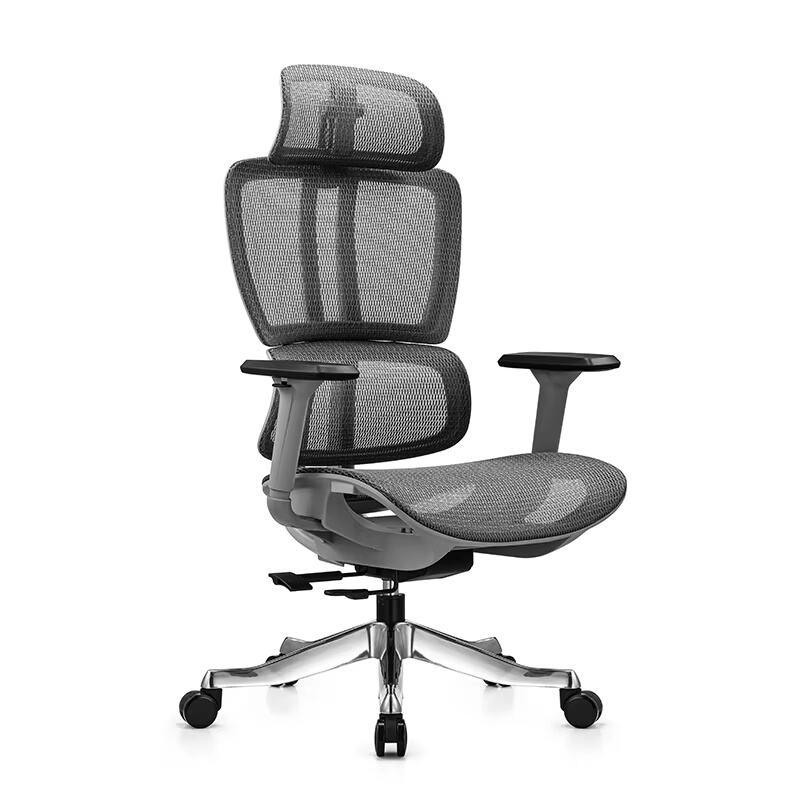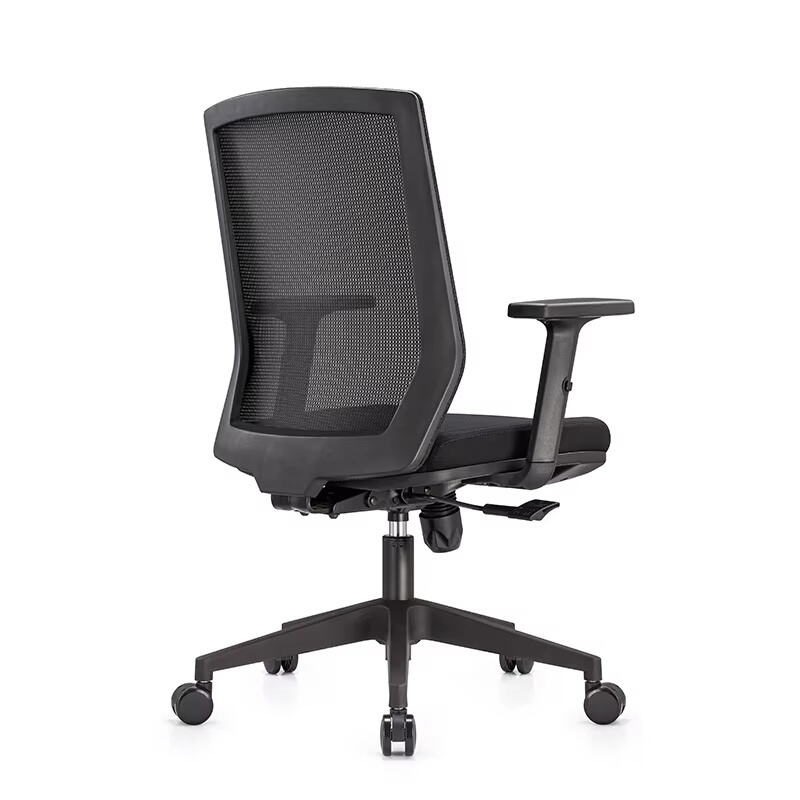
The Importance of Smart Seating Choices
Creating a productive and comfortable workspace involves more than just having a desk and computer. One often overlooked element in office design is the type of seating used. A fabric office chair can significantly influence the overall work experience, from posture support to long-term comfort. Choosing the right fabric office chair involves understanding the features that contribute to quality, durability, and ergonomic value. With many styles and options available, finding a high-quality fabric office chair requires a closer look at both functional and aesthetic elements.
Ergonomic Support and Comfort
Lumbar and Back Support
A high-quality fabric office chair should offer solid lumbar support that aligns with the natural curve of the spine. When the lumbar region is adequately supported, it reduces the risk of lower back pain and promotes better posture. Chairs that provide adjustable lumbar support are especially beneficial, as users can customize the pressure and positioning based on their individual needs.
The backrest should also be designed to support the upper and mid-back, helping to maintain overall spinal alignment throughout the workday. When choosing a fabric office chair, look for models with contoured backrests and integrated support zones.
Seat Cushioning and Pressure Distribution
Comfort is a key factor in productivity. High-density foam or memory foam seat cushions are essential for maintaining comfort over extended periods. The cushioning should provide pressure relief without being too soft or sagging with time. A well-padded fabric office chair can improve circulation in the legs and reduce fatigue.
In addition, the seat should have a waterfall edge design. This slight slope at the front of the seat reduces pressure on the thighs and promotes better blood flow, preventing numbness or discomfort during long hours of sitting.
Adjustability and Customization
Seat Height and Depth Adjustments
A fabric office chair should allow for easy adjustment of seat height to ensure that the user’s feet rest flat on the floor. This helps maintain proper posture and reduces strain on the knees and hips. In addition to height, seat depth is another important adjustable feature.
Chairs that offer seat depth customization allow users to find the ideal position for thigh support without placing excess pressure behind the knees. Adjustable depth is particularly useful for people of varying body sizes and leg lengths.
Armrest Flexibility
Armrests play a major role in upper body comfort. A fabric office chair with height- and width-adjustable armrests helps relieve pressure from the shoulders and neck. Some models also feature pivoting armrests that can be angled to support different tasks, such as typing or writing.
Adjustable armrests help maintain a neutral wrist and arm position, reducing the risk of repetitive strain injuries. Well-designed armrests can also provide extra support during breaks or while leaning back in the chair.
Fabric Quality and Breathability
Material Durability and Maintenance
When selecting a fabric office chair, material quality is a top consideration. Durable upholstery will withstand daily wear and tear, maintaining its appearance and comfort for years. High-performance fabrics, such as woven blends or mesh-fabric hybrids, offer both resilience and aesthetic appeal.
Fabric chairs should also be easy to clean. Stain-resistant treatments and removable covers can help maintain hygiene and prolong the chair’s lifespan. The ability to spot clean or machine wash the fabric ensures that the chair remains fresh and professional-looking.
Ventilation and Temperature Regulation
One of the main advantages of a fabric office chair is its breathability. Unlike leather or synthetic alternatives, fabric allows for better airflow, keeping users cooler during long periods of sitting. This feature is particularly valuable in warm climates or offices without strong air conditioning.
A breathable chair reduces sweating and helps maintain a consistent body temperature, which directly contributes to comfort and focus. Mesh-backed fabric chairs offer enhanced airflow while still providing soft cushioning.

Aesthetic Appeal and Workspace Integration
Matching Office Decor
A fabric office chair can complement the overall style of a workspace. With a wide variety of colors, textures, and patterns available, fabric chairs provide more design flexibility than other materials. Choosing a chair that aligns with your office’s aesthetic can contribute to a cohesive and motivating environment.
Neutral tones offer a classic look, while bold colors or unique textures can add personality. The versatility of fabric allows users to tailor their seating to match both traditional and contemporary office settings.
Compactness and Mobility
A good fabric office chair should balance functionality with form. Compact designs are ideal for smaller spaces or shared work environments, while chairs with smooth-rolling casters and swivel bases provide easy mobility. These features enhance accessibility and allow users to move freely within their workspace.
Look for chairs that combine streamlined frames with practical adjustability. Lightweight materials and ergonomic designs ensure that the chair remains easy to reposition without sacrificing support.
Longevity and Cost Effectiveness
Build Quality and Structural Integrity
A fabric office chair should be constructed with high-quality components, including a stable base, durable frame, and smooth adjustment mechanisms. Chairs that use metal bases and reinforced plastics tend to offer longer lifespans and greater load-bearing capacity.
In addition, quality stitching and fabric tensioning contribute to a longer-lasting appearance. Chairs that maintain their shape and support over time ultimately offer better value and user satisfaction.
Warranty and Support Services
Reputable manufacturers often back their fabric office chairs with warranties that cover defects and wear. A solid warranty reflects the brand’s confidence in its product and offers peace of mind for consumers. Consider chairs that come with at least a two- to five-year warranty for key components like frames, fabric, and gas lifts.
Reliable customer service and replacement part availability can also extend the life of your chair. Supportive brands will typically provide easy access to spare parts or maintenance instructions.
Environmental and Health Considerations
Sustainable Materials and Practices
Eco-conscious consumers may prefer fabric office chairs made from recycled or sustainable materials. Many modern chairs use fabrics that are certified as low-VOC (volatile organic compounds), reducing indoor air pollution. Sustainable manufacturing practices also contribute to lower carbon footprints and healthier workspaces.
Choosing environmentally responsible products not only supports global sustainability goals but also ensures that your office chair is made with fewer harmful chemicals and toxins.
Impact on Physical and Mental Health
A fabric office chair that provides adequate support and comfort contributes to overall health and well-being. Physical discomfort can lead to distractions, reduced productivity, and even chronic conditions. In contrast, a well-designed chair helps users maintain good posture, stay energized, and focus on tasks.
In addition to physical health, comfort and design aesthetics can positively affect mood and mental clarity. A workspace that feels supportive and personalized can boost morale and enhance job satisfaction.
FAQs
What type of fabric is best for an office chair?
High-quality woven fabrics, mesh blends, and materials with stain-resistant coatings are ideal for office chairs due to their durability and breathability.
How can I maintain and clean a fabric office chair?
Regular vacuuming, spot cleaning with mild detergent, and using fabric protectors help keep a fabric office chair clean and extend its lifespan.
Are fabric office chairs better than leather for daily use?
Fabric office chairs offer better breathability, making them more comfortable for long hours. They are also typically more affordable and available in more styles.
What features make a fabric office chair ergonomic?
Adjustable seat height, lumbar support, armrest customization, and breathable seat padding all contribute to the ergonomic design of a fabric office chair.










